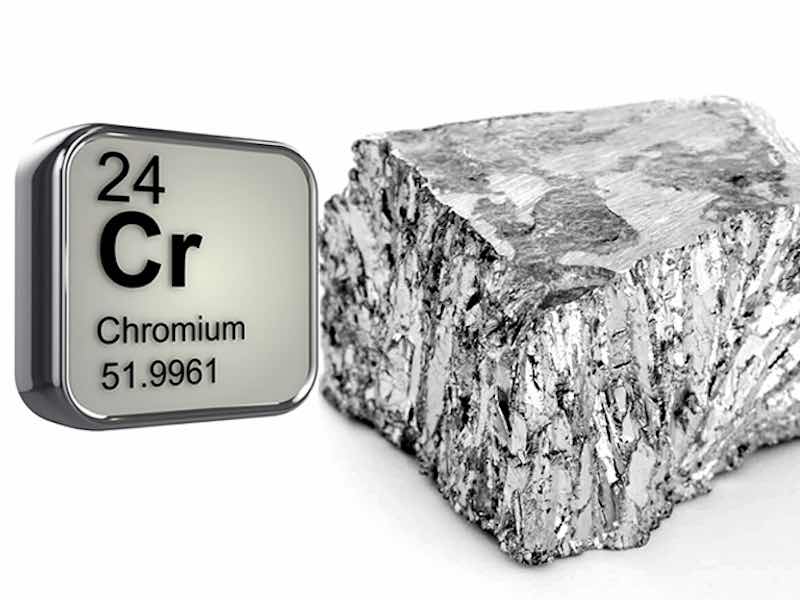The EPA recently completed a draft health assessment on Chromium-VI that is causing controversy in the scientific community because it concludes that Chromium-VI is likely to cause cancer through drinking water.
This conclusion is at odds with EPA’s previous assessments, much of the scientific literature, and assessments by other countries, including Canada.
Let’s separate fact from fiction, focusing on the significant shift by EPA on the toxicity of chromium.
Regulatory Background
 Susan GoldhaberThe current 1991 federal drinking water standard for total Chromium is 100 parts per billion (ppb). Although the standard sums Chromium-III and Chromium-VI in drinking water, it was established based on the more toxic Chromium-VI.
Susan GoldhaberThe current 1991 federal drinking water standard for total Chromium is 100 parts per billion (ppb). Although the standard sums Chromium-III and Chromium-VI in drinking water, it was established based on the more toxic Chromium-VI.
After completing its newest health assessment on Chromium-VI, the EPA has stated that they will revise chromium's 32-year-old drinking water standard. The EPA’s Integrated Risk Information System (IRIS) health assessment on Chromium-VI was completed in October 2022.
IRIS assessments use the systematic review process [1] to summarize all the relevant scientific studies on a chemical and reach a conclusion, based on these studies, as to the toxicity of the chemical. IRIS assessments are not regulatory documents but provide critical supporting information for individual EPA offices, such as the Office of Water, to support regulation. The EPA Office of Water, EPA uses IRIS assessments as the primary health effects support for setting and revising drinking water standards.
Understanding Chromium
The public’s awareness of chromium is based primarily on what was seen in “Erin Brockovich.” There is much more to chromium than what was portrayed in the movie.
Chromium occurs in two primary forms in the environment:
- Chromium-III (Trivalent chromium): A micronutrient that is essential for metabolism in the human body. It is found naturally in many vegetables, meats, and grains. The Institute of Medicine has determined an adequate intake of Chromium-III based on well-balanced diets of 25 micrograms per day for women and 35 micrograms per day for men (ages 19-50 years).
- Chromium-VI (Hexavalent Chromium): Occurs in the environment from natural chromium deposits in rocks and is produced by industrial processes, such as the burning of coal, natural gas, and oil, and from metal industries, such as chrome plating and steel production.
Chromium-VI is far more toxic than Chromium-III and is the main form found in drinking water and air. When Chromium-VI is ingested through food or water, 60-70% is converted in the stomach to Chromium-III, the much less toxic form. Scientific consensus does not believe Chromium-VI causes cancer after ingestion exposure from food or drinking water. On the other hand, inhalation of high levels of Chromium-VI can cause lung cancer, as demonstrated in occupational studies.
The EPA’s IRIS assessment disputes these findings, concluding that Chromium-VI is “likely to be carcinogenic in humans” from ingestion exposure. What is the basis for this conclusion?
The EPA used a 2008 National Toxicology Program (NTP) study in rats and mice. This 2-year study found:
- No adverse effects from Chromium-III,
- Increased cancers of the oral cavity (mouth, tongue) in rats and small intestine in mice from Chromium-VI,
- No increase in stomach cancers from Chromium-VI.
As with many animal studies, the study was done at concentrations orders of magnitude above what is found in drinking water, making the human relevance of the results questionable.
There are several issues involving the EPA’s conclusion on Chromium-VI and cancer:
- The EPA used the results from the NTP study to support a blanket statement that Chromium-VI is likely to cause cancer in humans, with no statements as to the associated type of cancer. The IRIS Assessment fails to address this distinction and contributes to misinterpretation by lumping all types of cancers together in its analysis. EPA downplays the results from a recent meta-analysis of Chromium-VI and stomach cancer that concluded that Chromium-VI does not pose a stomach cancer hazard to humans.
This is important because the three types of cancer are distinctly different. Stomach cancer accounts for approximately 1.8% of all all-cancer deaths in the US. The IRIS document gives the false impression that Chromium-VI in drinking water contributes to these fatalities. Cancer of the oral cavity is associated with the HPV virus, tobacco and alcohol use, and small intestine cancer is very rare in the US, accounting for fewer than 1 in 100 cancers overall.
- EPA concluded that Chromium-VI caused carcinogenic effects by a mutagenic mechanism. As previously discussed, various mutagenicity tests are readily available for testing chemicals. If most tests are positive, the chemical is mutagenic; if most are negative, the chemical is not. A finding of mutagenicity allows the EPA to follow their Cancer Guidelines and use the non-threshold approach, which results in a much lower acceptable “dose” than the threshold approach.
This conclusion is controversial because it differs from accepted science showing that Chromium-VI acts by a non-mutagenic mechanism. This was the basis of Health Canada’s conclusion that “the weight of evidence points to the occurrence of a threshold mode of action for Chromium-VI carcinogenesis.”
Over 30 articles published in peer-reviewed journals, done by The Chromium-VI Mode of Action Research Project, concluded that Chromium-VI does not act by a mutagenic mode of action. The EPA barely mentions these studies in their IRIS assessment, a curious fact considering they form the basis for much of the accepted science on this issue.
EPA excluded nearly all studies with negative results on mutagenicity from their analysis - ranking them of low certainty, even excluding the mutagenicity conclusions from the 2008 NTP study, which they had considered high confidence for the carcinogenicity results.
The EPA twisted itself in knots to explain its conclusions:
- “Although the current evidence base has not consistently identified signature mutations associated with chromium-VI exposure, there may be some indications from in vitro studies that Cr-VI induces mutations in vivo …”
Why Do These Conclusions Matter?
The fact that EPA ignored pertinent studies in basing their decision describes a “cherry-picking” bias that will result in significant downstream consequences. This IRIS assessment will serve as the regulatory basis for a new drinking water standard, which, in turn, will result in a Chromium-VI standard much lower than supported by evidence-based science. These regulations, built upon a shaky scientific foundation, will ultimately result in higher water bills, with little to no benefit for our nation’s health.
Reference
[1] Systematic review ranks studies based on the certainty of their findings: high, medium, and low confidence (certainty) or uninformative. Studies ranked as low certainty are given less weight in the health assessment than those categorized as medium or high confidence, and “uninformative” studies are not considered in the health assessment.
Susan Goldhaber, M.P.H., is an environmental toxicologist with over 40 years’ experience working at Federal and State agencies and in the private sector, emphasizing issues concerning chemicals in drinking water, air, and hazardous waste. Her current focus is on translating scientific data into usable information for the public.
This article appeared at https://www.acsh.org/ with permission of The American Council on Science and Health, a research and education organization.



































